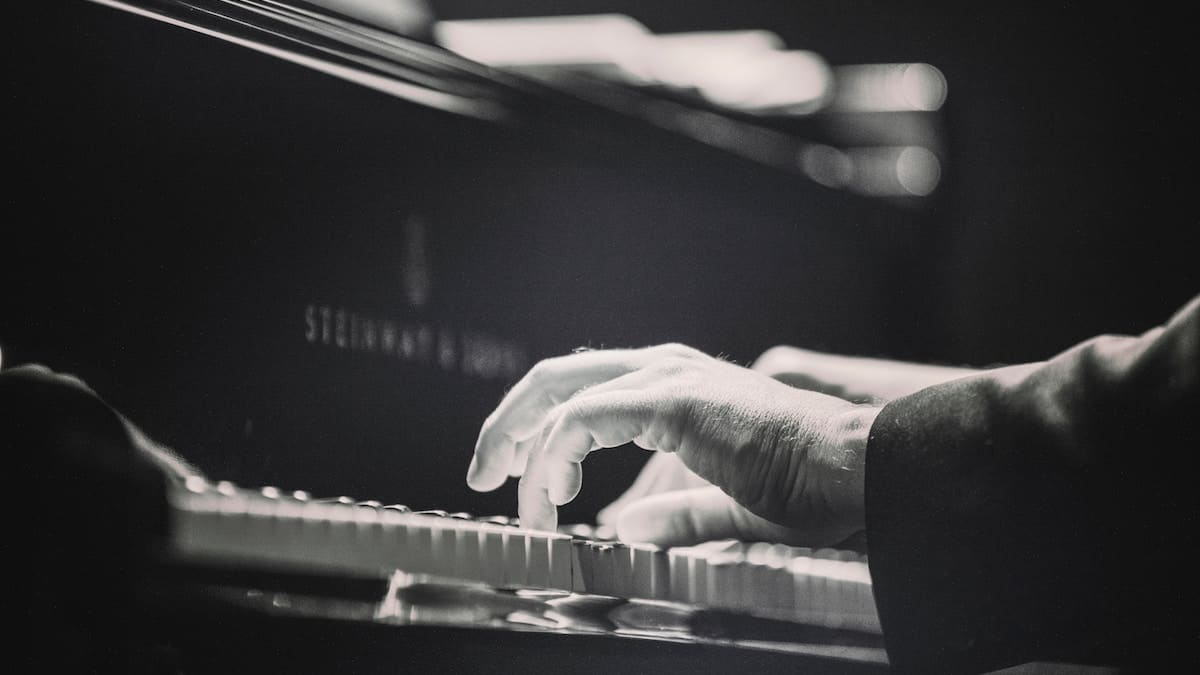Features
What Jazz Pianists Want To Tell Guitarists – Part 1

The first time I played with a jazz guitar player, he gave me some very specific details regarding voicings. “When we get to the F7 chord I like to play the 13 with the flat 9, and then G7 #9 #5, but put the Bb on the top of the voicing”…
This was so that we had no discrepancies when playing the tune together. Since I was younger and less experienced than him, I had to defer to his instructions as well as experience and expertise. In the back of my mind though, I thought that this was ridiculous. For most bands, it is a luxury to have two harmonic-based instruments on the same gig, so this situation rarely presented itself again. A couple of years later I went to “Snug Harbor” in New Orleans to check out my teacher Ellis Marsalis. He had a quintet with a saxophonist, bass, drums and a guitar player named Steve Masakowski. I couldn’t believe how seamless it was for them to play together, it was if they were linked telekinetically. I approached Steve and asked him if they talked through the “changes” ahead of time. He laughed a little and said, “No, we didn’t even talk about a set-list.” Baffled, I asked him how that was possible? He then told me: “I’ve been playing with Ellis for a long time and

Rule # 1: Listen to each other.
There are times when guitarists just decide to play the changes of a song as if they are playing with an Aebersold track or an iReal app. Nothing frustrates a pianist more than someone not listening while playing together. If you think about it though the solution is easy once we identify the problem. Major chords and minor chords are not that problematic, the quandary is the usage of the “Dominant 7th” chord. That is when the harmonic instrumentalist decides to use alterations (or not) to get a stronger resolution or a more colorful resolution. Imagine if the guitar player chooses the flat 9, 13th chord while the piano player chooses the #9, #11. The resulting effect could be harmonic dissonance. The solution, play the 3rd and 7th only until you figure out the pianist’s concept of that chord in that moment. Which could change, by the way, each chorus. This concept works both ways, as the pianist should respect the guitarists’ choices as well. At a jam session, Russell Malone walks in while I’m playing in the rhythm section and started comping. I deferred to him and sparsely played, it was beautiful and I didn’t feel cheated because he had control of the harmony. Keep in mind that piano is more suited for comping and that the guitarist has to learn how to build the intensity behind a soloist. Start with sparse rhythmic motives while comping and then gradually more complexity rhythmically and harmonically as the soloist develops their ideas. This will prevent the “side-eye” of the horn player asking for the pianist to join in when the solo begins to intensify and the guitar comping stays the same.
Rule # 2: Know your role and communicate.
If it is a Brazilian song, the guitar is the dominant instrument when comping. The pianist then plays little melodies complimenting the singer with motives (usually two octaves apart). This is extremely evident on Antonio Carlos Jobim’s “Finest Hour” recording of “The Girl From Ipanema”. Even the piano solo is minimalistic, just playing the melody integrated with simple harmonies that won’t clash with the guitar player. Additionally, the guitar is also viewed as a percussion instrument in as much as the pervading rhythm is repetitious and creates a symbiotic groove with the drums. If on the other hand, the song is a more McCoy “Tyner-esque” song with powerful spread voicings and open 5ths in the bass, then just “lay out” or play more textural sounds. Do not, I repeat, do not attempt to play rhythmically while this is going on. There’s no way you could predict what will happen, so don’t even try. The second part of this rule is very simple. Communicate. It doesn’t have to be verbally either, that infamous head nod that pianist gives means “you take over the comping.” The only problem is that most guitar players don’t give the nod back; they just keep playing when the pianist wants a turn. This behavior can lead to embarrassing verbal communication from the pianist. Usually with a scream to “lay out!” Communication regarding voicings can be a touchy subject, but sometimes necessary.
Larry Carlton told me that he learned a lot of passing chords and piano player tricks after playing with Joe Sample in the group “The Crusaders”.
When I played his music with him, he showed me exactly what was going on so I could more adequately interpret the song. If he didn’t tell me what to play or the concept, I wouldn’t know how to interpret the chord chart. This happens a lot with charts for Robert Glasper based tunes because he uses chromatic shifting devices in his harmonies that are more pianistic in nature. By that same token, Jobim employs the same approach but from a guitar perspective. It is important for each harmonic instrument to study the recording more than the lead sheet. In part two, we’ll explore in a more technical way how piano players interpret chords and how that translates to the guitar world. In the meantime, be careful out there. Pianists can be a real pain if they feel as if the guitarist is taking their job.
-
Jazz Guitar Lessons2 weeks ago
New JGT Guitar Lesson: Analyzing “Without A Song”
-
Jazz Guitar Lessons4 weeks ago
New JGT Guitar Lesson: Considering “Falling Grace”
-
Artist Features1 week ago
New Kurt Rosenwinkel JGT Video Podcast – July 2024
-
Artist Features2 weeks ago
JGT Talks To Seattle’s Michael Eskenazi



















